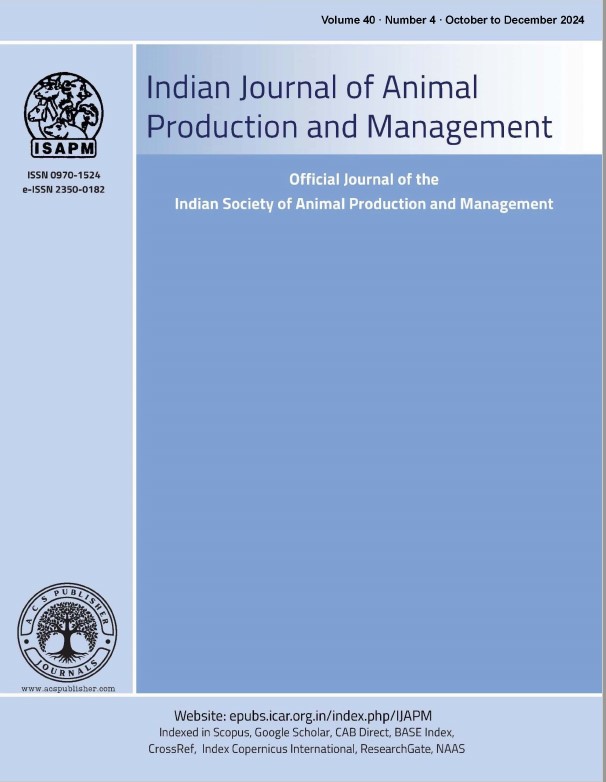GROWTH AND BEHAVIOURAL PATTERNS OF FEMALE CROSS-BRED CALVES UNDER DIFFERENT SHELTER MANAGEMENT PRACTICES DURING WINTER SEASON
Keywords:
Barn house, Bedding, Behaviour, Crossbred calves, Curtains, Growth, Loose houseAbstract
Fifteen crossbred calves were divided into 3 groups of 5 animals each on the basis of their similar body weight and age. Each group was allotted to three housing system viz. (T1, loose house; T2, loose house + bedding + curtains and T3 ,conventional barn) during winter season. Average maximum temperature was significantly (P<0.05) higher in T1 and minimum temperature was higher (P<0.05) in T3 as compared to other two groups. Mean DM intake/100 kg body weight was higher (P<0.05) in T3 calves as compared to other group calves. Average daily voluntary water intake and voluntary water intake /kg DM consumed were higher (P<0.05) in T3 group as compared to T1 and T2 group. Average daily weight gain (g) was 484.44+48.98, 566.67+102.05 and 560.00+94.08 in T1, T2 and T3, respectively. The weight gain and feed conversion ratio (DMI: gain) was significantly higher (P<0.05) in T2 as compared to other groups. The feed conversion efficiency (kg) was better in T2 (9.62) as compared to T1 (10.78) and T3 (9.84) groups. The animals spent more time in feeding during day than at night in all groups. Average feeding time (minutes) per day (24 hours) was more (P<0.05) in T3 calves as compared to T1 and T2 calves. The average resting time (minutes) was higher (P<0.05) in T2 (641.73) and as compared to T1 (604.67) and T3 (625.00) during day (24 hours). It was concluded that the modified house (Loose house+ bedding+ curtains) and conventional barn improved body growth and physical comfort of crossbred calves as well as more economical during winter season.

